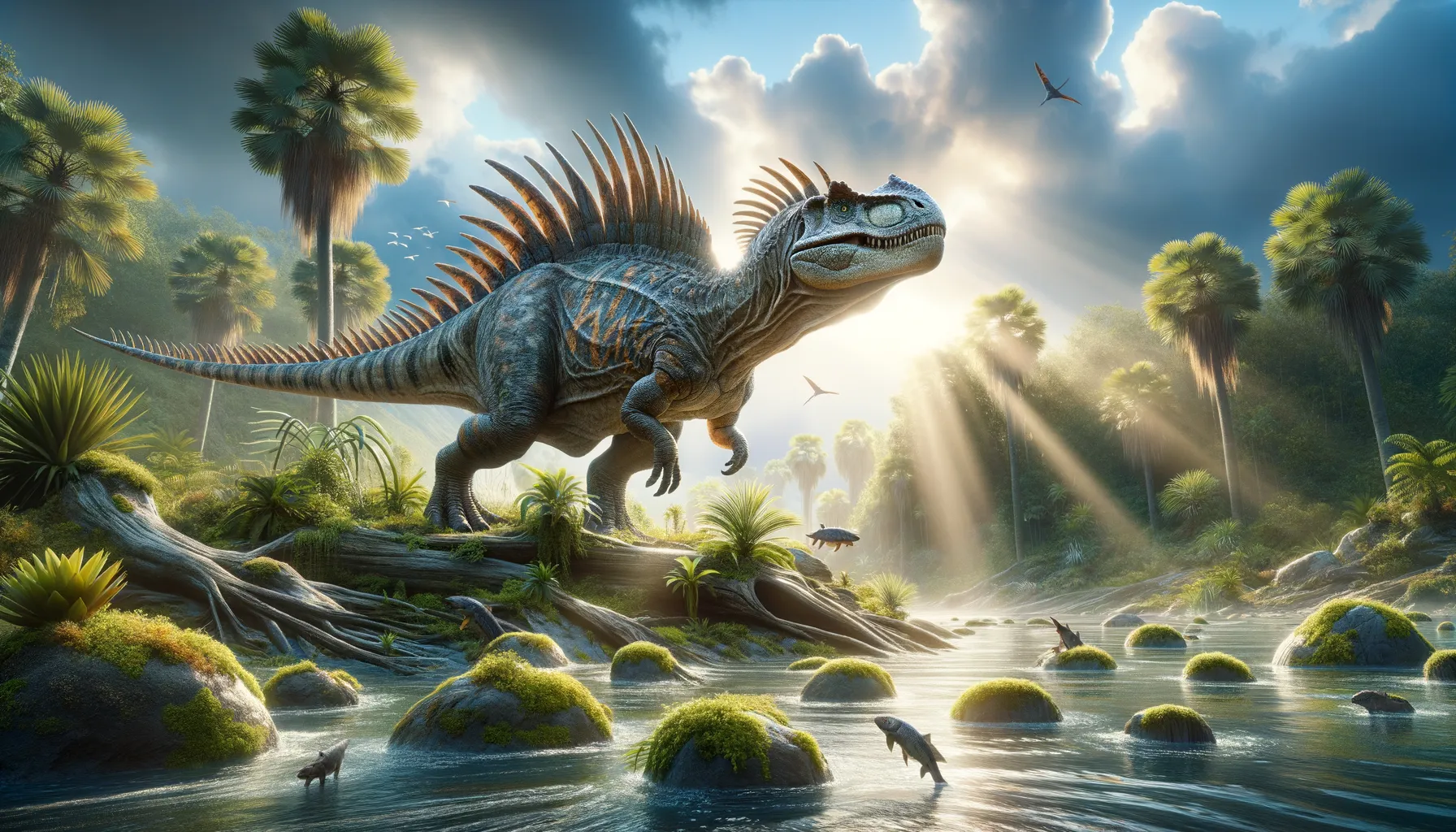
Liaoningosaurus
A tiny titan of land and water!
Period
Cretaceous
Length
About 34 cm in length.
Height
Approximately 30 cm tall.
Weight
Roughly around 2 kg.
Liaoningosaurus is a fascinating dinosaur from the Early Cretaceous period, remarkable for its small stature and unique features. Found in China, it has intrigued scientists with its partially aquatic lifestyle and adaptations that suggest a different ecological niche compared to other ankylosaurs. Despite its armor, evidence suggests it might have had a diet that included fish, hinting at a more diverse and opportunistic dietary strategy than previously thought for its kind.
Diet
Liaoningosaurus had a varied diet. While it was mainly herbivorous, it is suggested that it ate fish as well, based on some fossil evidence found near streams and rivers.
Hunting
As a small dinosaur, Liaoningosaurus likely scavenged or opportunistically fed rather than actively hunted. Its diet might have included small fish in addition to plant material.
Environmental challenges
During its time, it faced the challenge of adapting to both terrestrial and aquatic environments. Seasonal rainfall may have affected the availability of food sources. Predation from larger carnivorous dinosaurs also posed a significant challenge for its survival, despite its protective armor.
Speed
Likely slow-paced due to its small size.
Lifespan
Estimated around a few decades.
First discovery
Discovered in Liaoning, China, in 1999.
Fun Facts
- Liaoningosaurus is a small dinosaur that lived about 125 million years ago during the Early Cretaceous period.
- This dinosaur was discovered in Liaoning Province, China, which is known for its well-preserved fossils.
- Liaoningosaurus is considered unique because it might have been both a herbivore and a carnivore, a rare combination for dinosaurs.
- Unlike many dinosaurs, Liaoningosaurus had a turtle-like belly armor that could have been used for protection.
- It is a member of the ankylosaur family, which is famous for their armored bodies and often clubbed tails.
- Liaoningosaurus fossils are relatively small, with some specimens measuring only about 34 centimeters in length.
- The well-preserved fossils help scientists understand more about the environment and conditions of the Early Cretaceous period.
Growth and Development
Liaoningosaurus likely grew quickly during its juvenile stages to achieve its body armor early for protection. Growth rings in bones suggest that it developed rapidly during favorable conditions. Studies suggest that its development was influenced by both genetic factors and environmental conditions like food availability.
Habitat
Liaoningosaurus inhabited regions with abundant water sources such as rivers and lakes, indicative of its semi-aquatic nature. The region's climate was likely warm with distinct wet and dry seasons. This habitat provided opportunities for a diverse diet and shelter from predators.
Interaction with other species
Liaoningosaurus' small size relative to other dinosaurs might have led to interactions where it avoided larger herbivores and predators. Its armor provided some defense from predators. It likely coexisted with a range of species in its ecosystem, sharing resources and habitat.
Natural lifespan
Had a natural lifespan of several decades.
Reproduction
Liaoningosaurus likely reproduced by laying eggs, like other dinosaurs of its kind. Fossil discoveries suggest that it nested in safe environments away from major water bodies to protect its young from predators.
Social behaviour
It might have had social behaviors similar to other herbivores, potentially forming small groups for protection. Communication among individuals may have occurred through visual displays or sounds. Group living could have provided advantages against predators and in finding food.
Fossil locations
Predominantly found in Liaoning Province, China. The initial discovery site provided a wealth of information about Early Cretaceous ecosystems. These fossil sites have contributed to our understanding of small dinosaur adaptations and paleoecology.
